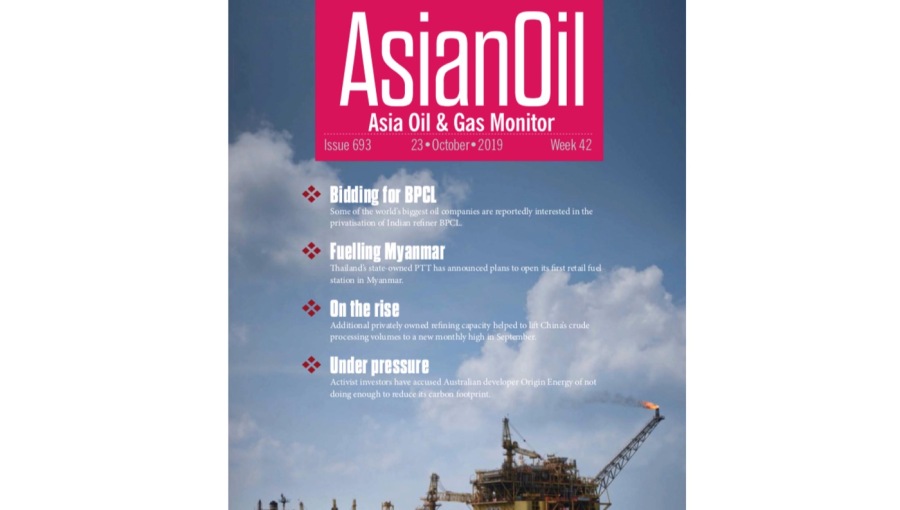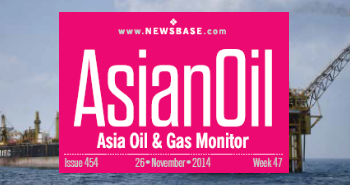AsianOil: Russian oil figures to China via Kazakhstan drop slightly in 2024

Russia’s oil shipments to China via Kazakhstan have remained largely stable throughout 2024, data from Kazakhstan's pipeline operator, KazTransOil, indicate.
Between January and November, oil transit from Russia to China through KazTransOil's network totalled 9.12mn tonnes, the company revealed in an update earlier in the month detailing its oil export and transit figures for the first 11 months of the year.
The volume, while sizeable, marks a slight decline of 0.25% against the 9.14mn tonnes transported along the same route and same pipeline during the same period in 2023 KazTransOil adds.
For December 2024, the company reportedly plans to ship around 862,000 tonnes of Russian crude to Chinese buyers.
Shipments along the pipeline were an issue Russian President Vladimir Putin raised during a state visit to Astana at the end of November when his delegation, along with Kazakh officials, discussed the possibility of increasing Russian oil and gas exports to China via Kazakhstan. It is a possibility that serves to underscore the strategic importance of Kazakhstan as a transit hub in Russia’s ongoing energy diplomacy with China.
Taking the optimistic view of what is essentially a repeat of figures shipped in 2023, the volumes do suggest a consistent and well-maintained energy partnership between Russia and Kazakhstan, despite minor fluctuations.
Regional analysts opting for a slightly less rosy outlook point to Beijing increasing the depth of its oil and gas supply options as one reason the numbers along the KazTransOil network have essentially stagnated.
Meanwhile, discussions on increasing said oil and gas flows do point to a deepening of economic ties and shared strategic interests in serving China's energy demands – all the more important to Moscow in recent years given lost revenue sources from Western countries after the Ukraine invasion of February 2022. Kazakhstan’s role as a functioning transit nation thus highlights its geopolitical significance in fostering regional cooperation and supporting Russia’s efforts to strengthen its energy trade with China.
It is an issue the Russian leader himself referred to whilst in the country. “We have discussed the possibility of creating new routes for pumping our products – petroleum and gas alike – to third countries, primarily the People’s Republic of China, through the territory of Kazakhstan among other optional routes,” Putin said in an official English language translation of the Kremlin’s own transcript of the briefing.
He added that “these are very lucrative, exciting and promising routes and projects. Without a doubt, they will help stabilise the global economy, primarily, in the Asia-Pacific region, and we will thus gain an extra opportunity to engage in market operations.”
At present, Russia's state-owned energy giant Gazprom now regards China as its principal export market, following the suspension of natural gas deliveries to the majority of European nations. As such, earlier in December Gazprom announced that natural gas flows through the Power of Siberia pipeline to China had reached their full design capacity of 38bn cubic metres annually.
Gazprom began supplying gas to China via the Power of Siberia pipeline in late 2019, with volumes gradually increasing until achieving maximum capacity. This development points to the deepening energy partnership between Russia and China, as Moscow pivots towards Asian markets in response to shifting geopolitical and economic dynamics.
The long-term significance of the relationship with Beijing in particular lies in this potential for expanding upon existing energy cooperation with increased shipments in future. As part of this, ongoing talks about the Power of Siberia 2 pipeline would, if eventually realised, see a second route run through Mongolia to northern China, and in the process solidifying China's position as Russia's top gas consumer.
If you’d like to read more about the key events shaping Asia’s oil and gas sector then please click here for NewsBase’s AsianOil Monitor.


Follow us online